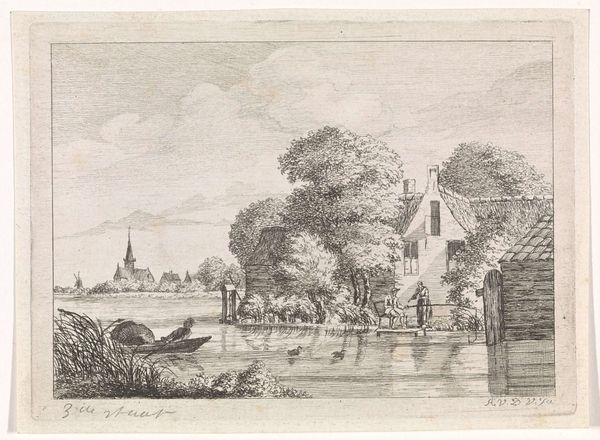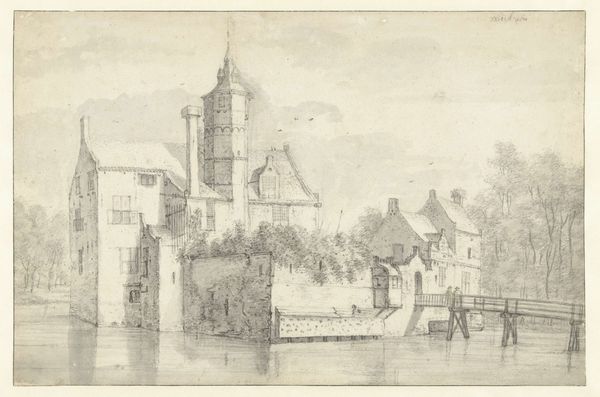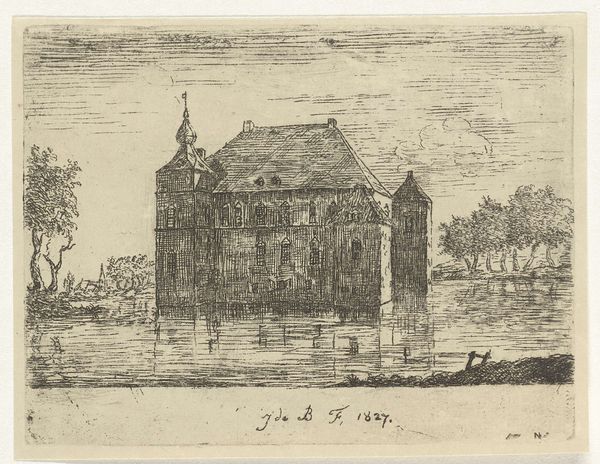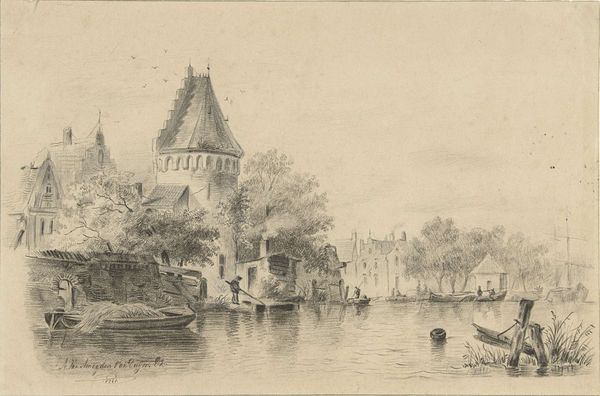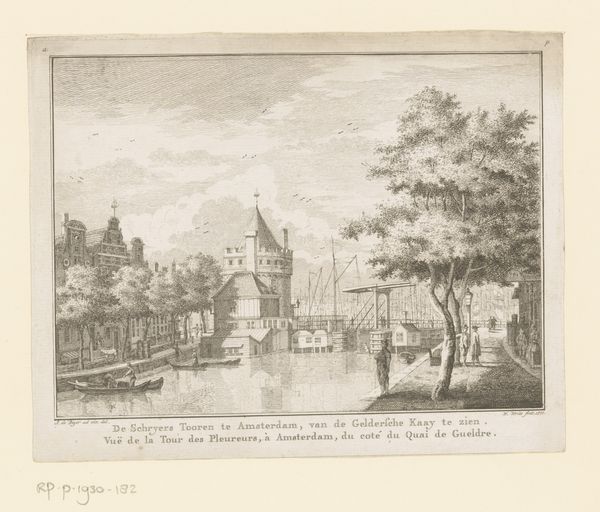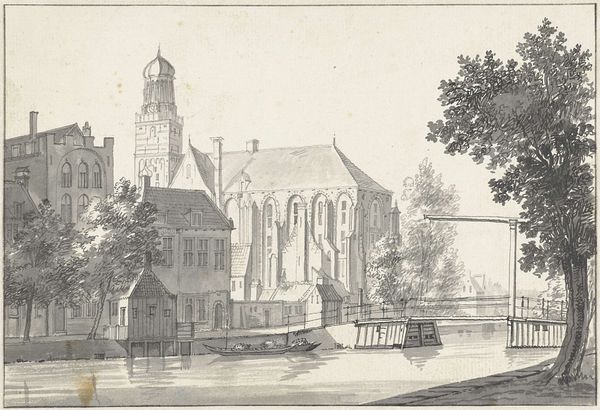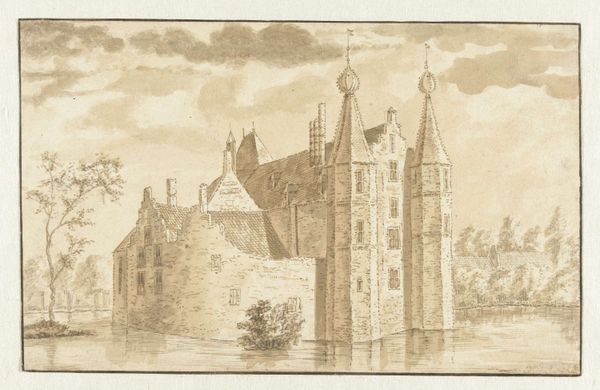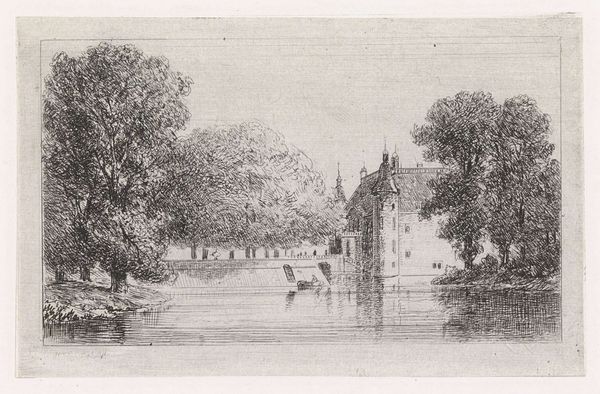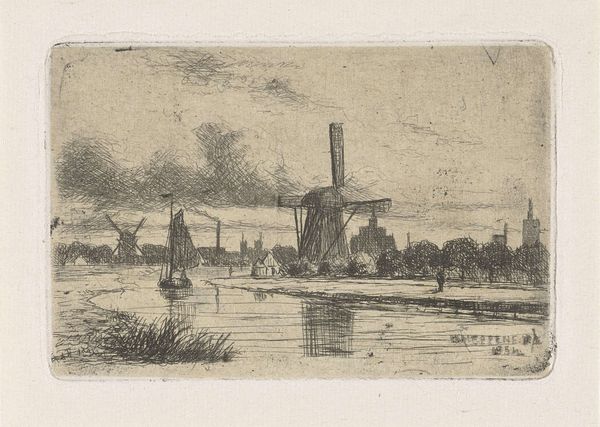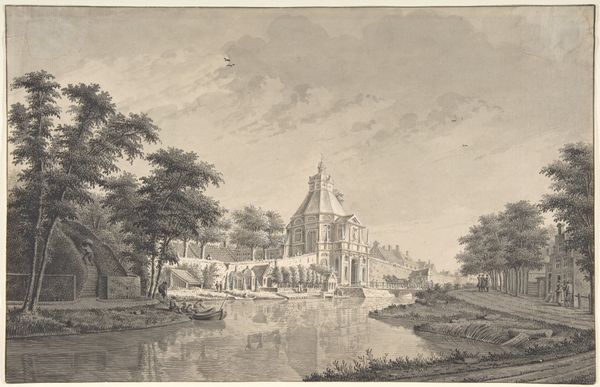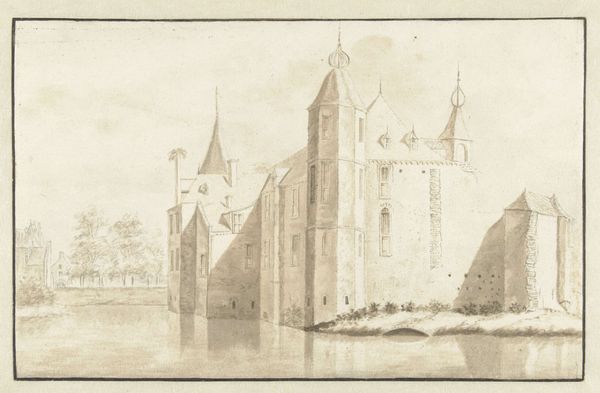
print, etching
#
dutch-golden-age
# print
#
etching
#
landscape
#
cityscape
#
realism
Dimensions: height 225 mm, width 318 mm
Copyright: Rijks Museum: Open Domain
Curator: Here we have Elias Stark’s "Waterpoort te Sneek," an etching dating back to 1887, currently housed at the Rijksmuseum. Editor: It's a delicate, almost wistful image. The detailed lines create a stillness; even the water feels like it’s holding its breath. There's a powerful use of contrast, particularly around the gate itself. Curator: Stark, a less celebrated figure than his Dutch Golden Age predecessors, positions himself within that artistic legacy through this etching. The Waterpoort, a historical city gate, functions here as more than just a landmark; it's a symbol of Sneek's civic pride and historical identity. Editor: Agreed. And formally, see how the gate's reflection subtly anchors it to the watery foreground? It draws the eye and organizes what could easily become a scattered composition. There is clear spatial ordering through linear and atmospheric perspective that brings our attention from the boats to the city. Curator: Indeed. While on one level it's simply a representation of place, Stark's choice of subject also reflects broader late 19th-century concerns with preserving cultural heritage amid rapid urbanization. These gates, once crucial for defense and trade, were becoming relics. Stark’s art thus participates in a broader conservation movement, enshrining historical architecture. Editor: The monochromatic etching medium is particularly apt for creating such contemplative reflection; in grayscale, he has masterfully evoked the material qualities and details of brick, stone, wood and even rippling water. Look at how he employs hatchings to vary shadow and highlights across surfaces, lending a tactile quality to the architecture. Curator: I think it is important to recognize, too, the choice to include figures within the scene. The men by the boat invite the viewer into the tranquil Dutch atmosphere. These are not just figures used to accentuate the monumental size of the architecture but characters embedded in the narrative that Stark seems eager to depict. Editor: It's clear Stark’s artistry lies in both the careful arrangement of forms, as well as how light is handled; it’s a balanced piece and full of detailed visual moments, although subdued in palette. Curator: It is indeed a small work, but Stark offers us a window into a society grappling with its relationship to the past. Editor: The etching's inherent details provide many clues, which encourage close inspection of form, light and detail.
Comments
No comments
Be the first to comment and join the conversation on the ultimate creative platform.


